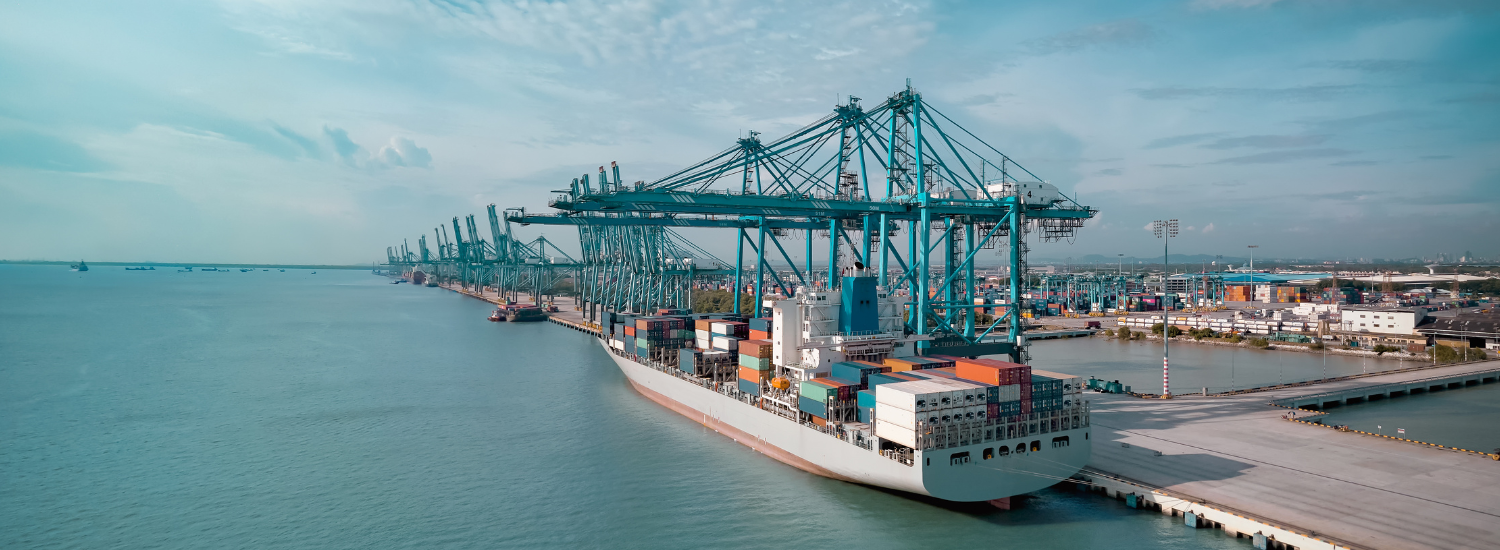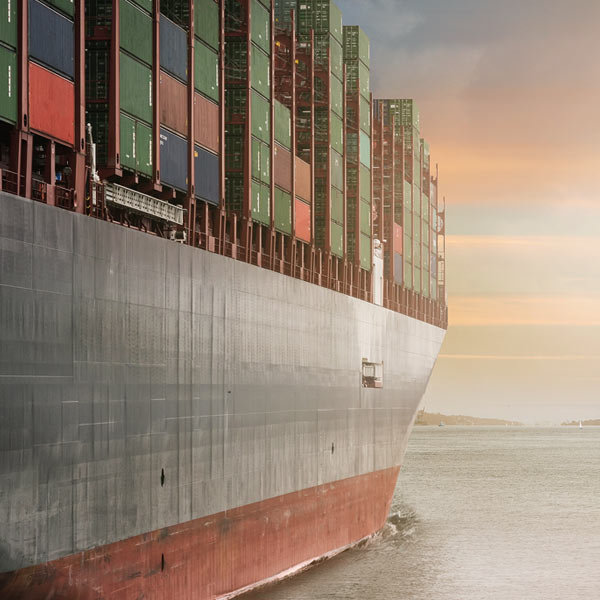Before packing, check this list of items prohibited from entering a particular country or region.
Key takeaways
- A Bill of Lading (BoL) is a legal document issued by a carrier or transporter of goods to a shipper to acknowledge the receipt of cargo.
- Types of Bill of Lading include Inland Bill of Lading, Ocean Bill of Lading, Through Bill of Lading, Negotiable Bill of Lading, Non-negotiable Bill of Lading, Clean Bill of Lading and Claused Bill of Lading.
- A Bill of Lading is issued by the carrier (the company responsible for transporting the goods) or their authorised agent, such as a shipping, logistics or freight company or a third-party transporter.
- The consignee on a Bill of Lading is the person or company receiving the goods, typically the buyer.

Bill of Lading definition
A Bill of Lading (BoL) is a legal document issued by a carrier or transporter of goods to a shipper, such as an international shipping company, to acknowledge the receipt of cargo. It details the type, quantity, particulars and destination of the goods, the route taken, and the type of transport used, such as a ship, lorry or plane.
A BoL is transferable by endorsement (the legal transfer of ownership from one party to another), ensuring exporters are paid and importers receive their goods.
It serves three primary purposes:
- As a receipt for the shipped goods, acknowledging that the carrier has loaded them onto a mode of transport.
- As evidence of the contract of carriage between the shipper and carrier.
- As a document of title to the goods, indicating who legally owns the cargo.
A crucial part of international trade, the BoL ensures that the shipper receives payment and the consignee gets the goods as agreed.

Bill of Lading example
Below is a typical example of a Bill of Lading, which is essential for legally transferring goods during transportation and serves as proof of the contract between a shipper and a carrier.
BoLs differ depending on the shipment type, transport mode, and legal requirements. However, their core purpose remains the same: to ensure the secure and accurate delivery of goods from the sender to the recipient.

Choosing the correct BoL is essential to avoid delivery delays...

Types of Bill of Lading
There are several types of Bill of Lading, each tailored to specific shipping needs. Choosing the correct BoL is essential to avoid delivery delays and to track and manage shipments properly.
Types of BoL include:
- Inland Bill of Lading: for land transportation, typically domestic shipments or the first leg of an international journey.
- Ocean Bill of Lading: for sea transport, often required for international shipments.
- Through Bill of Lading: allows the shipment to pass through different forms of transport, such as a truck to a ship.
- Negotiable Bill of Lading: transfers ownership of the goods — a key document in international trade, as it can be bought, sold, or traded while the goods are in transit.
- Non-negotiable Bill of Lading: does not transfer ownership of the goods but serves as a receipt. It's commonly used when the buyer and seller have a direct relationship.
- Clean Bill of Lading: demonstrates the goods arrived in acceptable condition, with no visible damage or shortages.
- Claused Bill of Lading: indicates that goods were received in an unacceptable condition, such as visible damage or discrepancies, often resulting in delays or additional inspections.
Waybill vs Bill of Lading
A Bill of Lading and a waybill are both shipping documents but have fundamental differences. A BoL is negotiable and can transfer ownership of goods from one party to another, making it essential in international trade. In contrast, a waybill is non-negotiable and cannot transfer ownership of the goods. It simply authorises delivery to the receiver but does not grant ownership.
A waybill simplifies the release process, as the receiver of the goods does not need to present the physical document to collect them. In contrast, a BoL often requires the consignee to present the original document for the carrier to release the goods. Recently, waybills have increasingly replaced BoLs in simpler transactions, such as when the shipper and consignee are part of the same business group.

How to fill out a Bill of Lading
To fill out a Bill of Lading, you must include specific information to ensure accuracy and avoid potential delays. Authorised representatives from the shipper and carrier must also sign the document to validate the shipment.
The following is a breakdown of the typical BoL completion process:
Shipment summary
- The date the BoL was issued.
- BoL number — a unique identification used to track the shipment.
- Name and address of the shipper or the party sending the goods.
- Consignee or receiving party's name, address and location where the goods are delivered.
- Third-party freight bill — if someone besides the shipper or consignee is paying the freight charges.
Carrier information
- Carrier name — the company responsible for transporting the goods.
- The Trailer Number, Seal Number, Standard Carrier Alpha Code (SCAC), and Pro Number to track and verify the shipment.
- Freight charge terms — prepaid, collected upon delivery or billed to a third party.
Special instructions
- Additional details or handling instructions from the shipper.
Customer order information
- Customer order number for the shipment (provided by the customer).
- The total number of packages in the shipment.
- The weight (if using pallets) and any extra instructions for the carrier.
Handling unit
- Specifies about the type of packaging, quantity, and if the item is considered Hazardous Materials (HM).
Commodity description
- A detailed description of the shipped goods, including its National Motor Freight Classification (NMFC) and freight class.
Grand total
- Total handling unit information, weight, and the sum of any fees related to the shipment.
Payment terms
- If applicable, the amount to be Collected on Delivery (CoD).
- Freight charges to indicate if the shipment is prepaid or CoD.
Signatures and dates
- The date and shipper's signature, confirming the shipper has handed the goods to the carrier.
- The date and carrier's signature upon receiving the goods.
- Receiving Stamp Space — for the consignee or receiver to confirm delivery of the goods.

Who issues Bill of Lading?
A Bill of Lading (BoL) is issued by the carrier (the company responsible for transporting the goods) or their authorised agent. This could be a shipping, logistics or freight company or a third-party transporter. The BoL is created once the goods are loaded onto the chosen method of transport, whether it's a truck, ship, or plane. It is signed by both the shipper and the carrier, confirming that the goods are ready for shipment.
The BoL is then forwarded to the buyer's bank or directly to the buyer, depending on the terms of the sale. In transactions involving a letter of credit, the buyer's bank needs the BoL to verify that the carrier has shipped the goods before releasing payment to the seller. Upon arrival, the buyer or consignee uses the BoL to claim ownership of the goods and arrange for final delivery.
Who is the consignee on a Bill of Lading?
The consignee on a Bill of Lading is the person or company receiving the goods, typically the buyer. Details, such as their name, address and contact details, are listed on the BoL to ensure accurate delivery. Upon collection at the destination, if it's a negotiable BoL, the consignee must present the appropriate documentation, such as an original BoL, photo identification and an invoice, to ensure the carrier hands it to the correct party.
If the BoL is non-negotiable, the consignee may not need to provide additional documents, as the carrier releases the goods based on the information in the BoL itself.
What is a Bill of Lading number?
A Bill of Lading number is a unique identifier assigned to each BoL document. It allows shippers, consignees, carriers, and customs officials to track shipments' journey from origin to destination. The BoL number also provides access to detailed information about the goods, including the shipment's history, current location, customs clearance, payment status and delivery updates.
In addition to tracking the shipment, the BoL number links to other crucial shipping documents, such as commercial invoices, packing lists and certificates of origin. These documents are essential for customs clearance and compliance with international regulations.
BoL numbers are increasingly integrated into electronic tracking systems, providing real-time updates across global logistics processes. They play a vital role in managing large-scale logistics operations across multiple countries and transport modes, including reducing the risk of theft or misplacement of goods.












